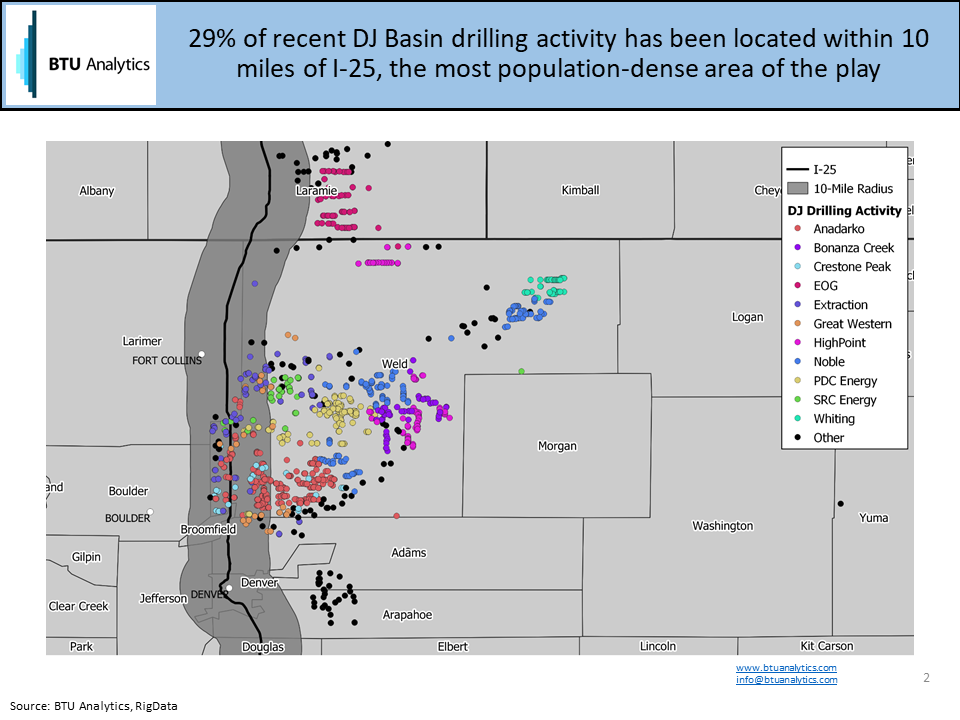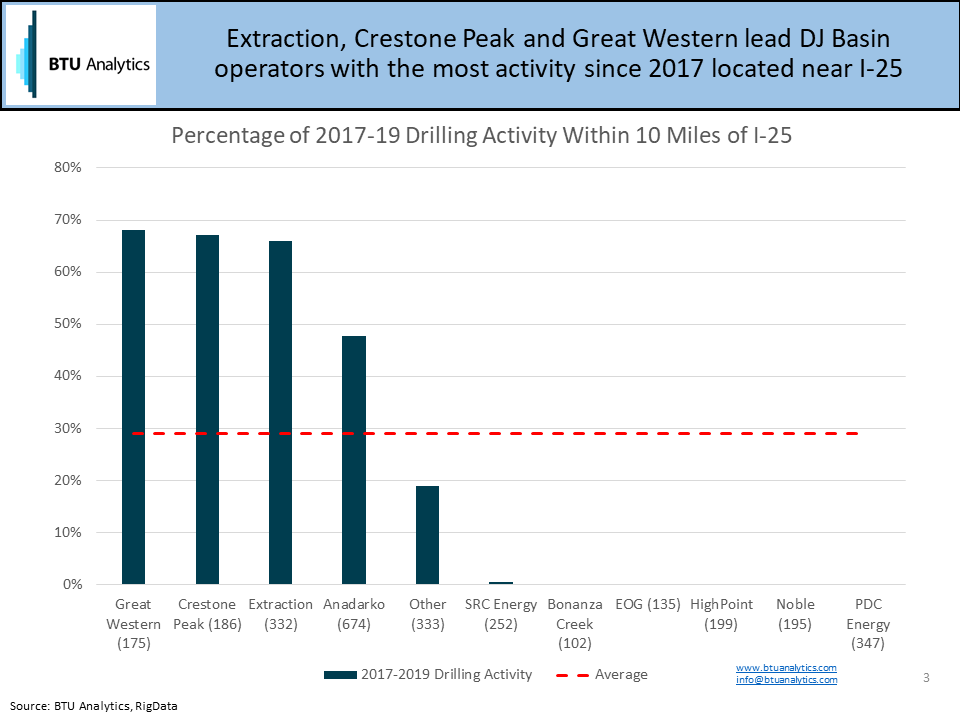As Proposition 112 gained steam in Colorado last fall ahead of the November election, BTU Analytics highlighted the changing political landscape in the state. Voters soundly rejected the ballot item. However, despite 55% of voters decided against the measure, we continued to foresee growing regulatory risk in Colorado. Regulatory risk now resurfaces in the form of Senate Bill 181 or SB-181. SB-181 proposes sweeping changes to existing oil and gas regulations in Colorado. In this analysis, we will look at what areas in the DJ Basin could be most impacted by SB-181.
There are still a lot of questions surrounding how SB-181 would be enforced. Some of these questions may not be answered for years to come. As well as numerous opportunities exist for the language in the bill to change. However, a few things are certain: the bill aims to give increased authority to local governments, increased voice to impacted parties, and change the makeup and mission of oil and gas regulatory body, the Colorado Oil and Gas Conservation Commission (COGCC).
The map below highlights how each county voted for the recent Proposition 112 ballot. Not surprisingly, the county with the majority of drilling activity, Weld County, overwhelmingly rejected Proposition 112. Its neighbor, Boulder County, hasn’t seen any drilling activity in at least five years yet voted considerably in the opposite direction.

While Denver and Broomfield counties also voted in favor of Proposition 112, it is near this Weld-Boulder boundary where the controversy behind oil and gas development lies. This is because of the rapid population growth along Colorado’s Front Range along the I-25 corridor. As residential development expanded in the area, oil and gas development continued often pushing near backyards and city streets.
If SB 181 passes and the COGCC fundamentally changes to weigh equally the benefits of oil and gas development with public health, safety, and welfare (along with increased local government input on well sites), then the I-25 corridor is the most likely area for these new considerations to have an impact. The map below shows DJ drilling activity from 2015 to present along the I-25 corridor. 29% of the drilling activity during the last 4 years occurred within a 10-mile radius of I-25 in Colorado.

However not all operators are active in this densely populated area of the DJ Basin. The chart below highlights the percentage of drilling since 2017 that major DJ Basin operators have within a 10-mile radius of I-25. The number next to each operators’ name represents the number of wells spud since 2017. Extraction, Crestone Peak and Great Western have each drilled around two-thirds of their wells within the I-25 corridor. Meanwhile, the most active DJ Basin operator, Anadarko, drilled just under 50% of wells within 10 miles of I-25. Anadarko, uniquely, owns most of the mineral rights on its acreage, thus quelling some of the forced pooling concerns raised by SB-181. However, operator proximity to residential areas could impact future permitting if residents are successful in petitioning well siting based on health and environmental concerns.

The new regulations could also significantly increase the amount of time to obtain a permit. This could cause DJ operators to slow activity as they wait for permits to catch up with their desired pace of drilling. If existing permits are not grandfathered into any new regulation, the impacts could be significant. Operators would essentially need to restart their permitting process on a much longer time scale to obtain new permits. In the face of rising regulatory risk, permitting activity in Colorado has risen sharply since mid-2018.
Most operators likely have enough DUCs and permits to fuel their near-term production plans. However, risk lies in 2020 and beyond if SB-181 comes to fruition. If well permitting becomes more difficult in the coming years, DJ Basin production growth could be challenged. To see how BTU Analytics models DJ Basin oil and gas production in the midst of regulatory and infrastructure challenges, request a copy of the Upstream Outlook today.









